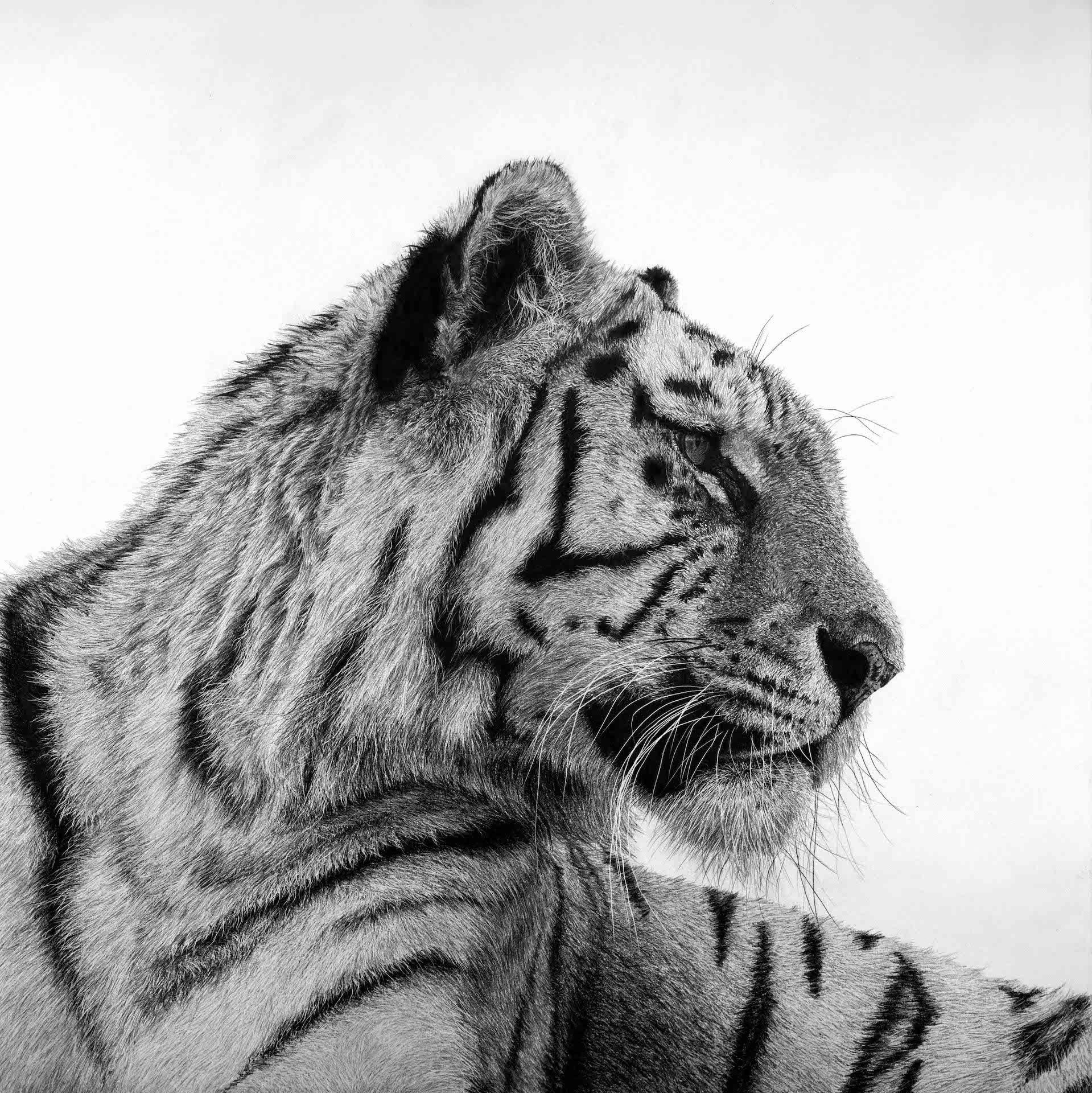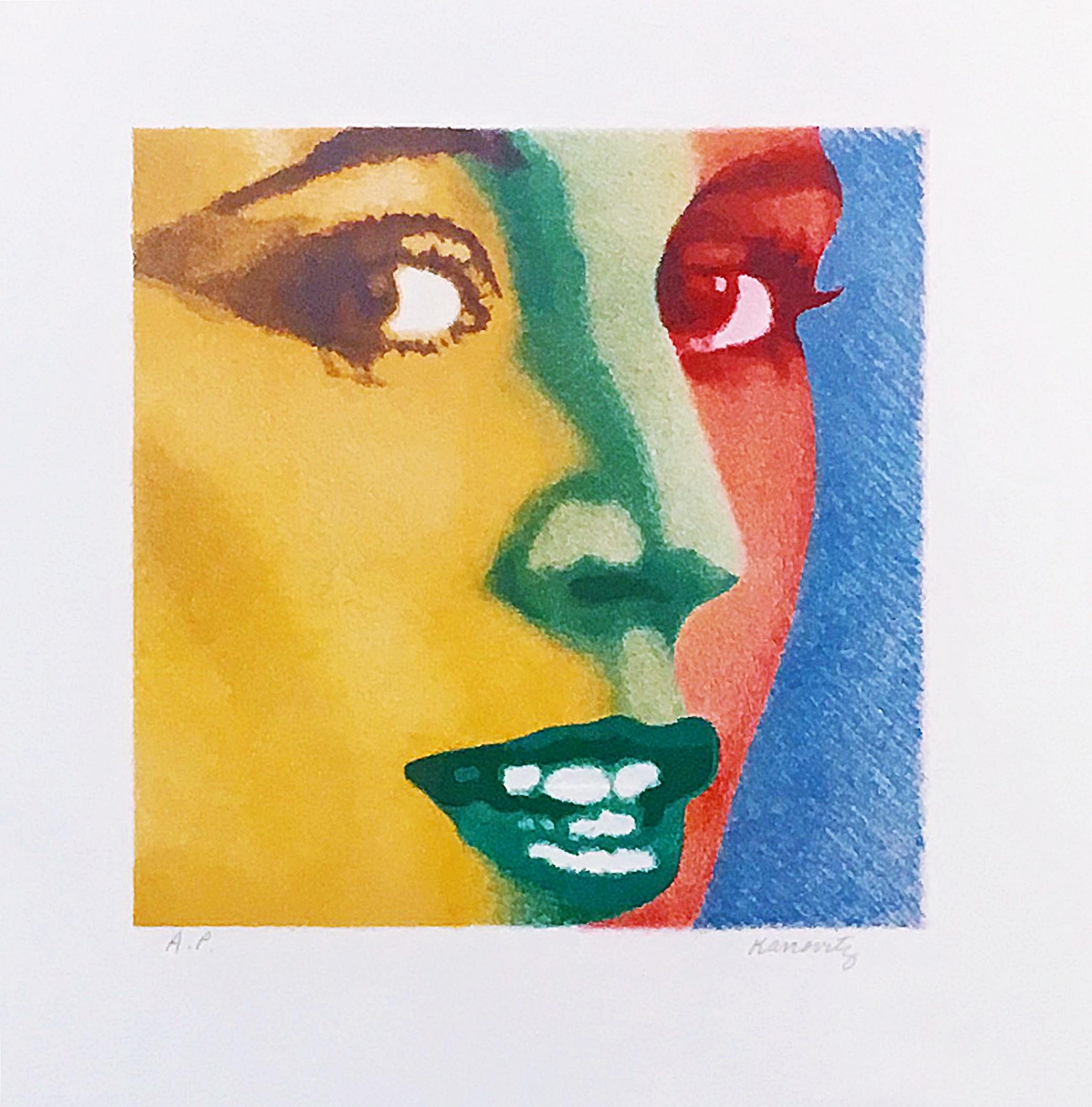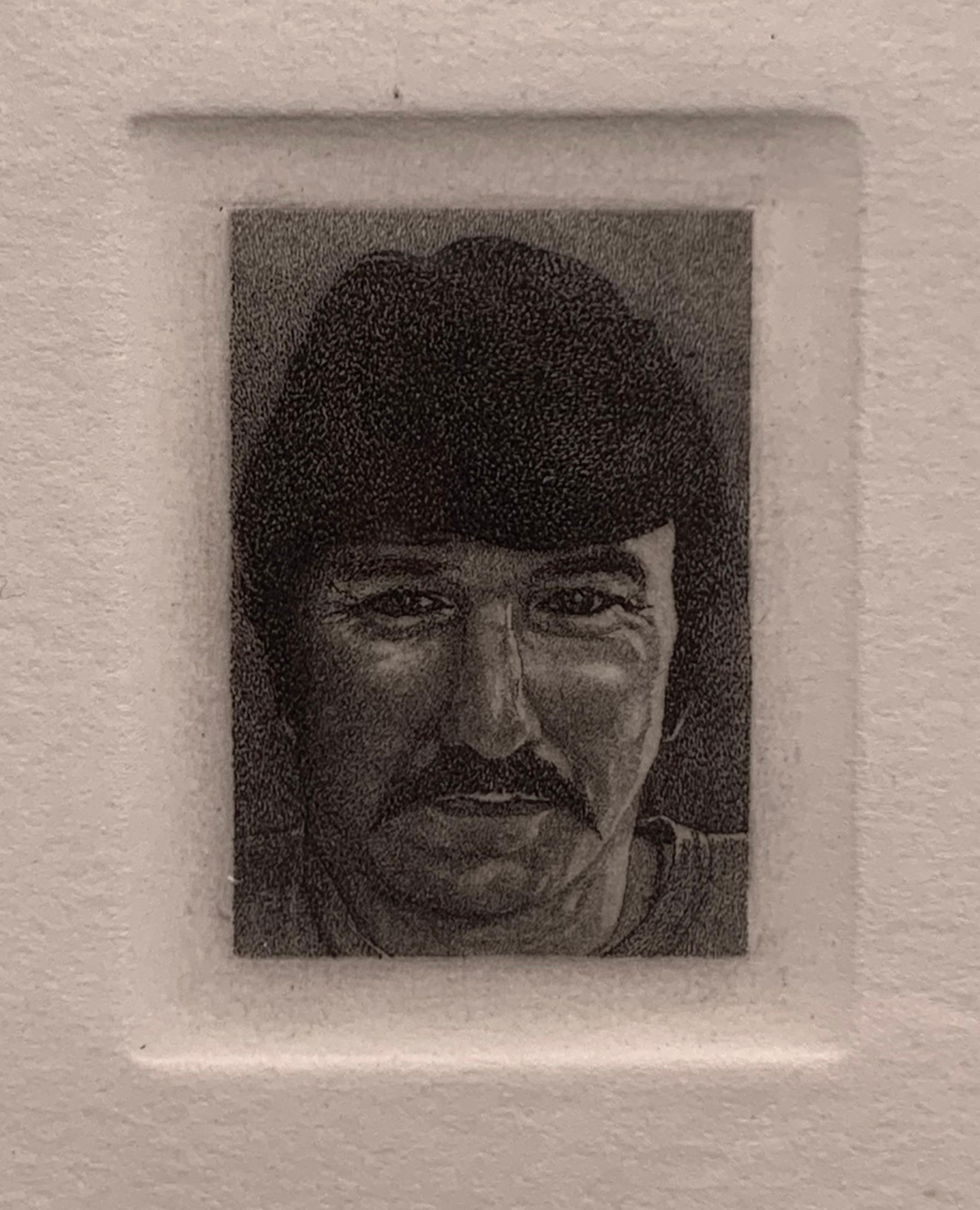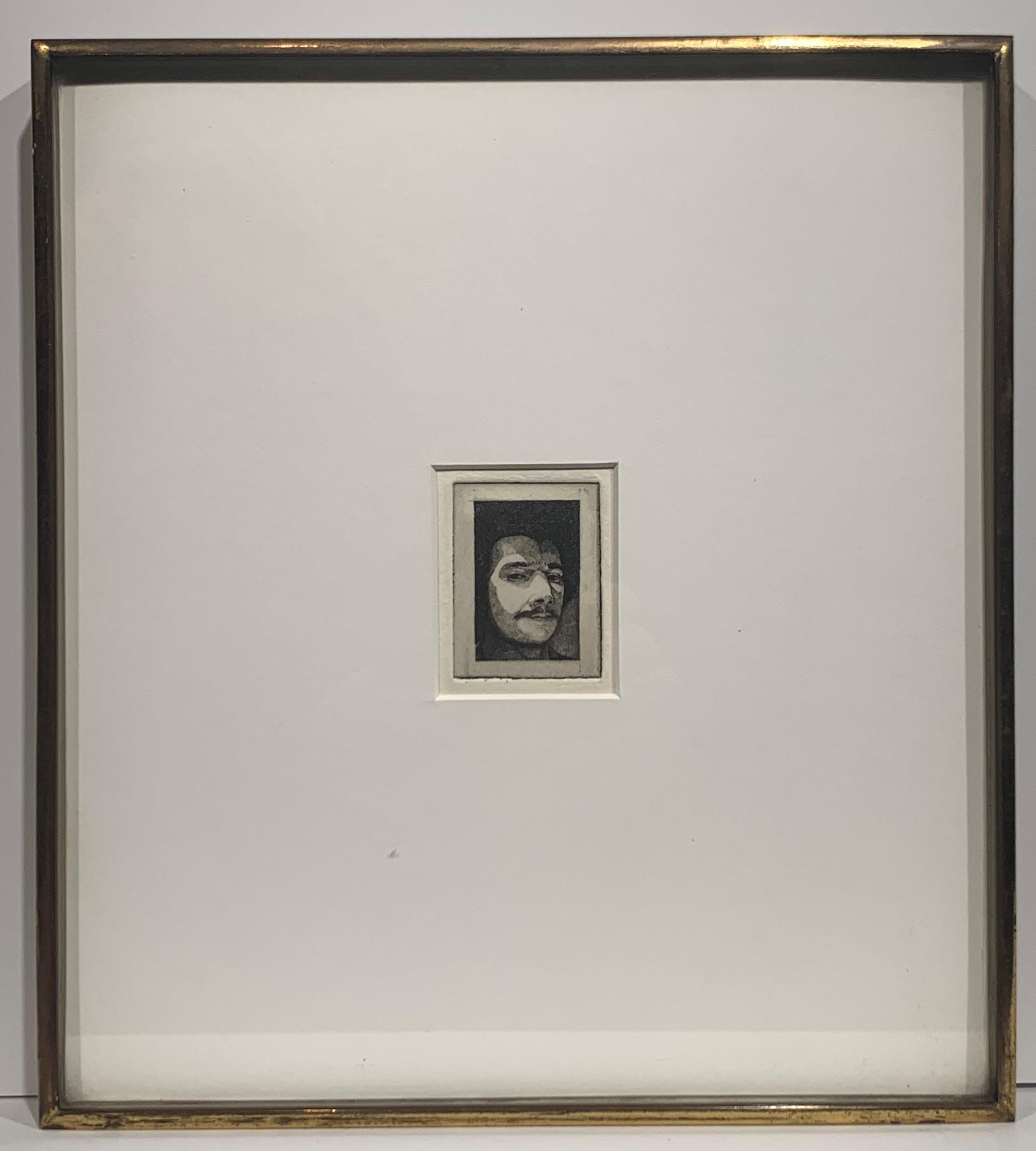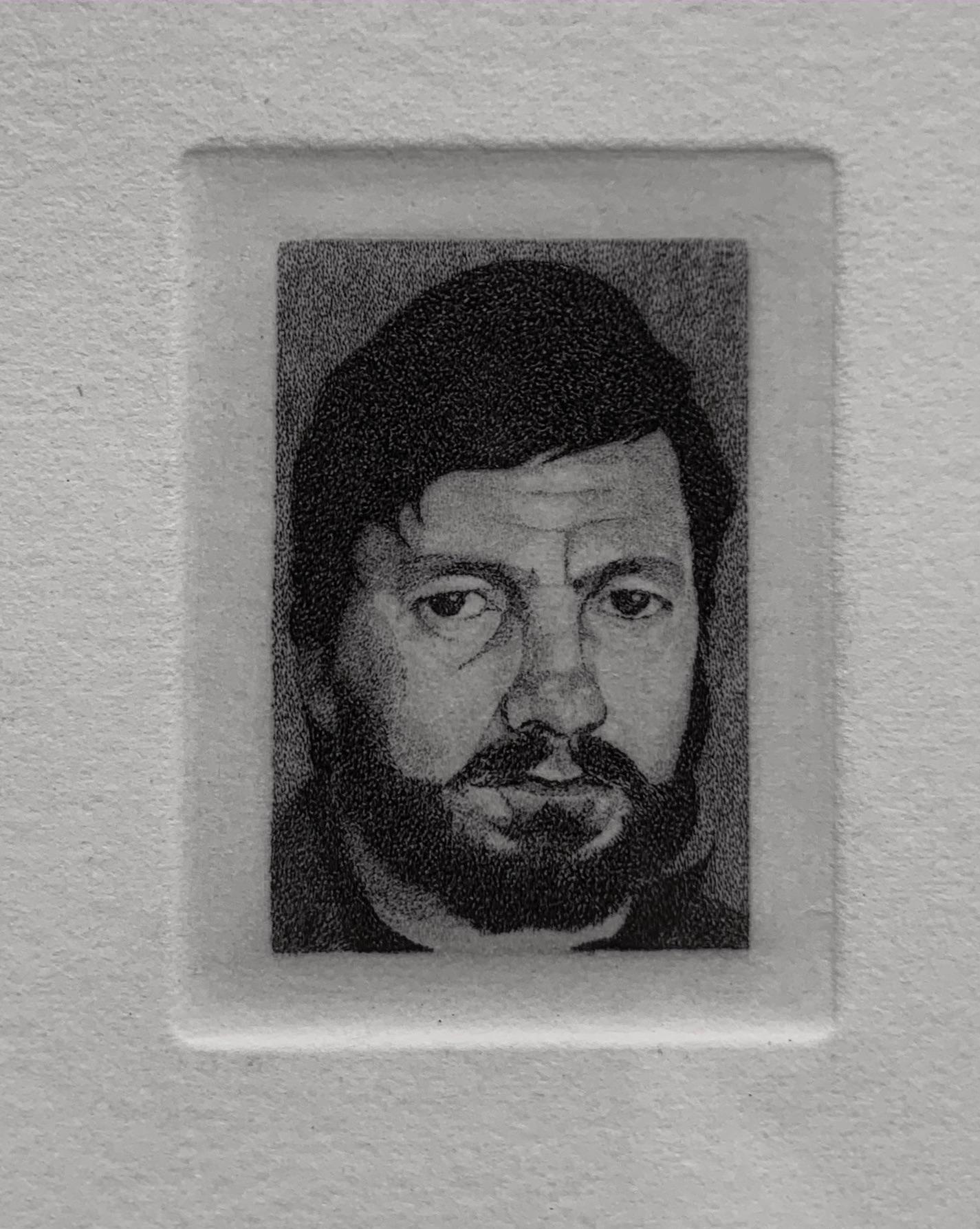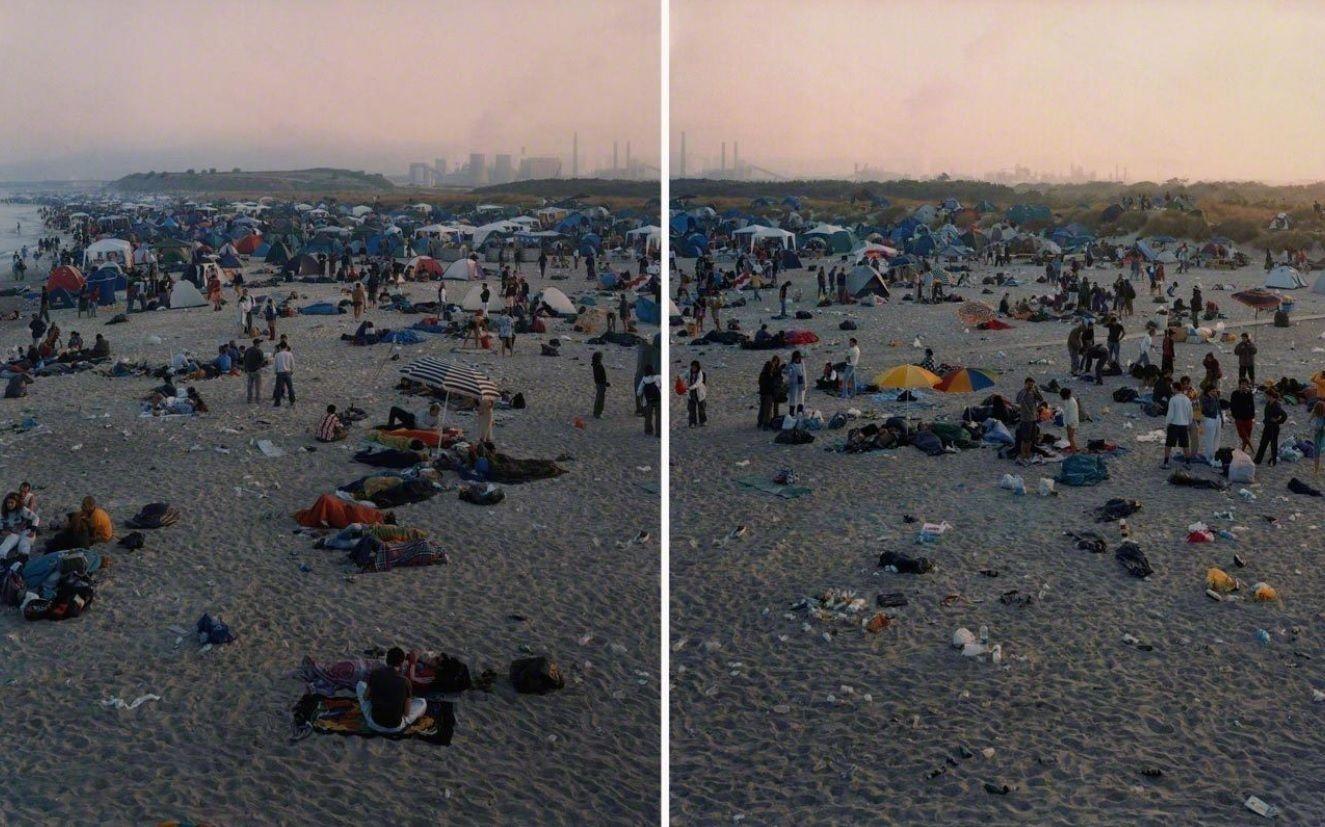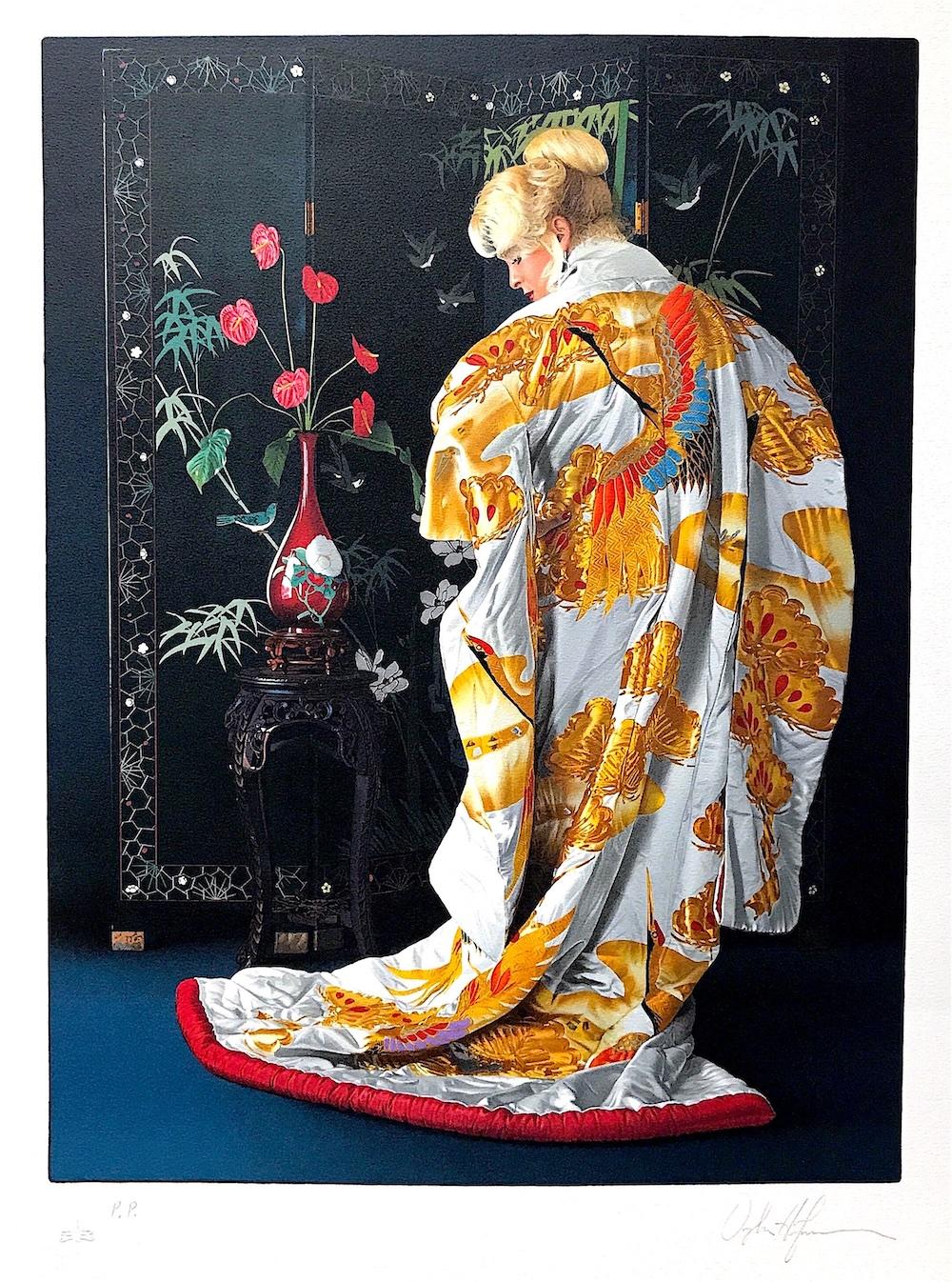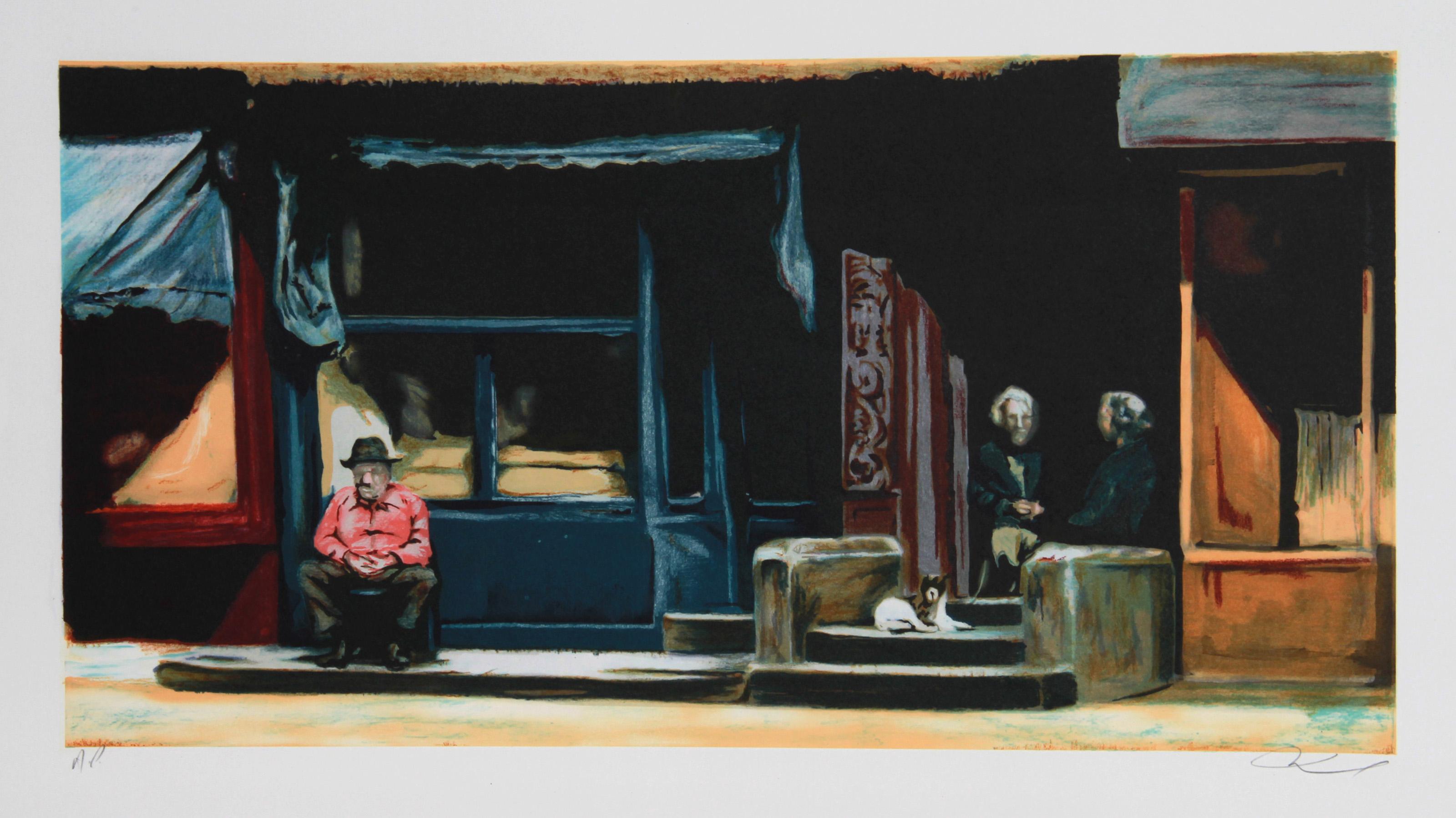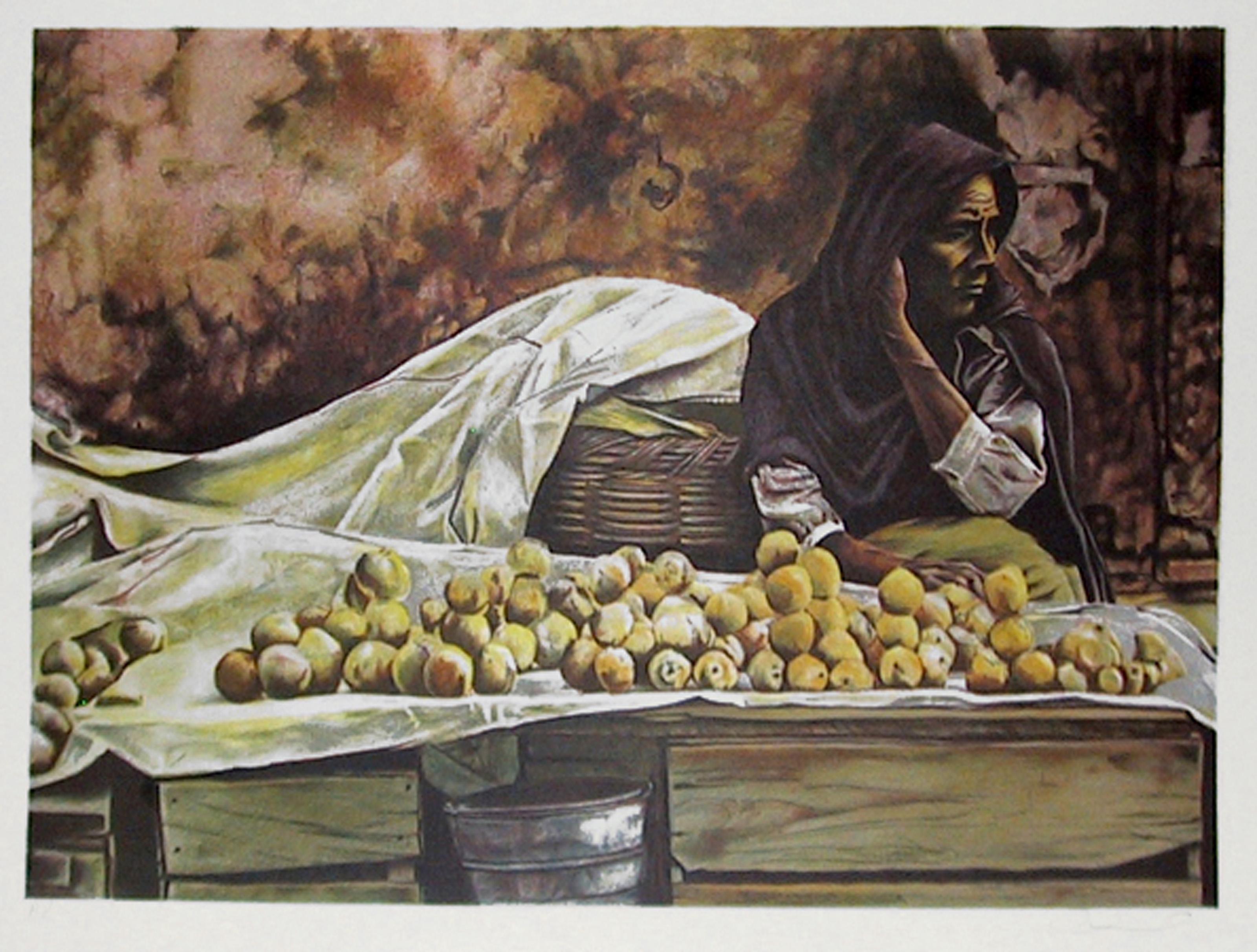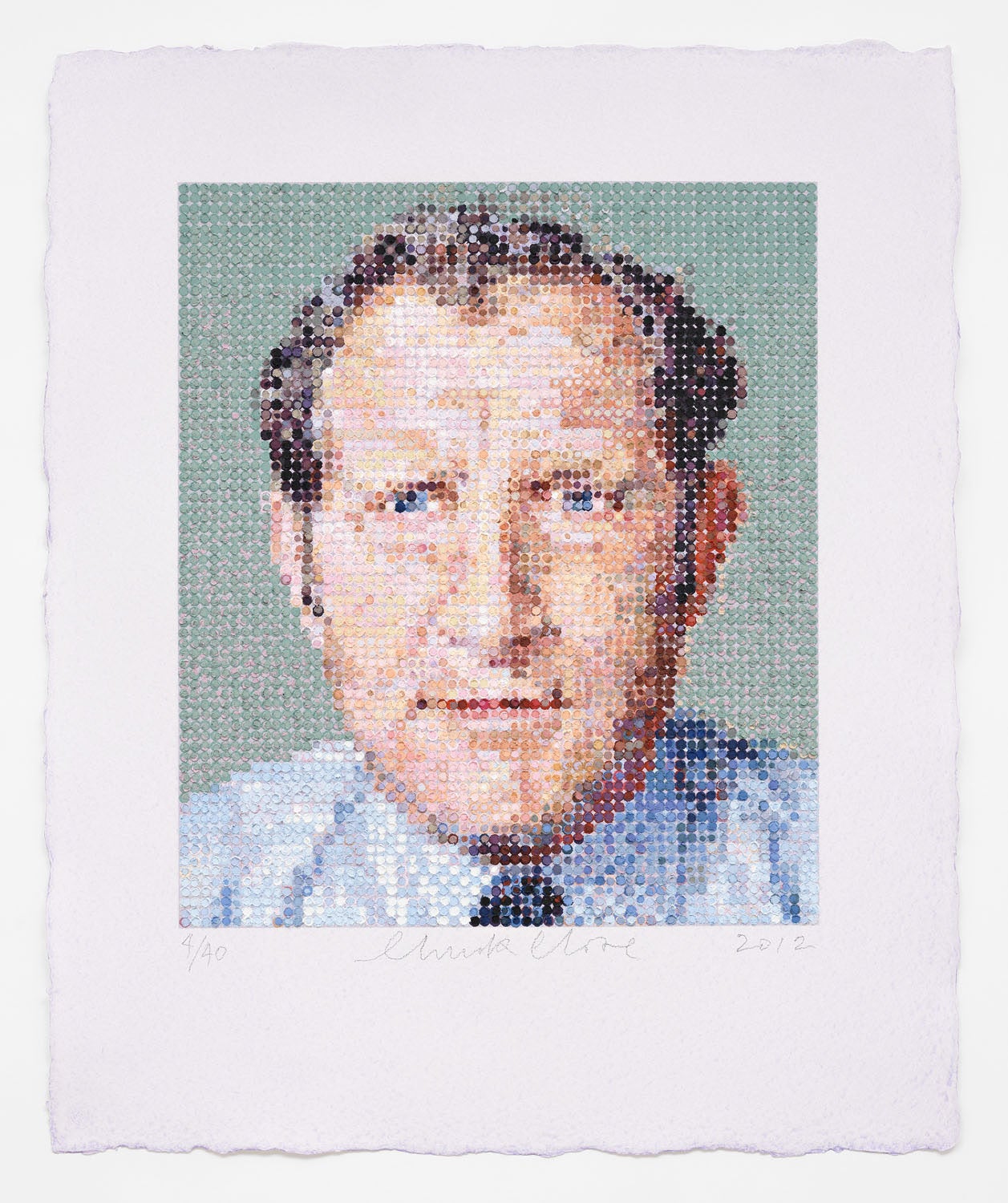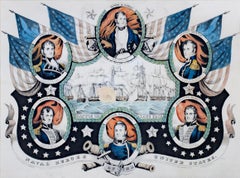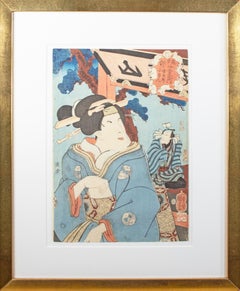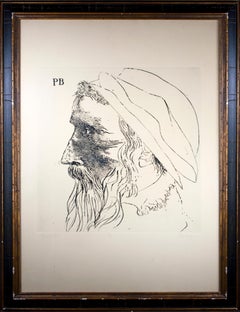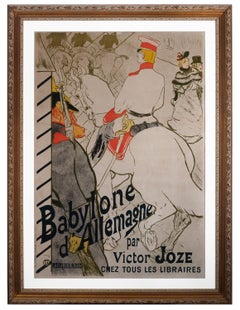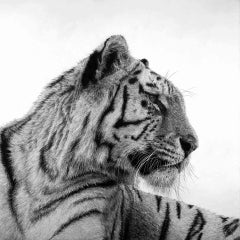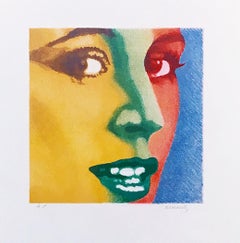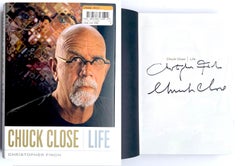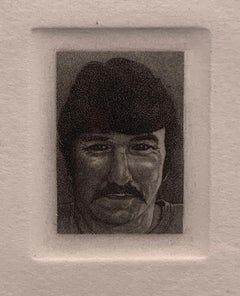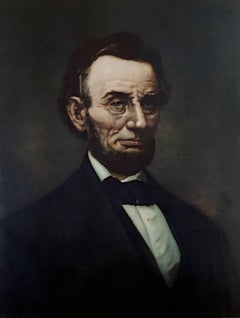
"Large Portrait of Abraham Lincoln, " Hand-embellished Print based on Photograph
View Similar Items
Want more images or videos?
Request additional images or videos from the seller
1 of 7
Unknown"Large Portrait of Abraham Lincoln, " Hand-embellished Print based on Photographcirca 1900
circa 1900
About the Item
- Creation Year:circa 1900
- Dimensions:Height: 46.5 in (118.11 cm)Width: 36.25 in (92.08 cm)
- Medium:
- Movement & Style:
- Period:
- Condition:
- Gallery Location:Milwaukee, WI
- Reference Number:Seller: 10644c1stDibs: LU60532913111
About the Seller
4.9
Gold Seller
Premium sellers maintaining a 4.3+ rating and 24-hour response times
Established in 1966
1stDibs seller since 2017
430 sales on 1stDibs
Typical response time: 2 hours
Authenticity Guarantee
In the unlikely event there’s an issue with an item’s authenticity, contact us within 1 year for a full refund. DetailsMoney-Back Guarantee
If your item is not as described, is damaged in transit, or does not arrive, contact us within 7 days for a full refund. Details24-Hour Cancellation
You have a 24-hour grace period in which to reconsider your purchase, with no questions asked.Vetted Professional Sellers
Our world-class sellers must adhere to strict standards for service and quality, maintaining the integrity of our listings.Price-Match Guarantee
If you find that a seller listed the same item for a lower price elsewhere, we’ll match it.Trusted Global Delivery
Our best-in-class carrier network provides specialized shipping options worldwide, including custom delivery.More From This Seller
View All19th century color lithograph portraits ship seascape patriotic flags military
By Nathaniel Currier
Located in Milwaukee, WI
The present hand-colored lithograph is an excellent example of patriotic mid-nineteenth century American imagery. The print shows the battle and several of the major figures involved in the Battle of Lake Erie: At the center is a view of several frigates on the lake, embroiled in conflict. Above the battle is the quotation: "We have met the enemy and they are ours." Surrounding are laurel-lined roundels with portraits of Oliver Hazard Perry (1785-1819), Stephen Dicateur (1779-1820), Johnston Blakeley (1871-1814), William Bainbridge (1774-1833), David Porter (1780-1843), and James Lawrence (1781-1813) - all of these framed by American flags, banners and cannons. This print shows that the Battle of Lake Erie, part of the War of 1812, still held resonance for American audiences several decades later and was part of the larger narrative of the founding of the country.
9.5 x 13.5 inches, artwork
20 x 23.38 inches, frame
Entitled in the image
Signed in the stone, lower left "Lith. and Pub. by N. Currier"
Inscribed lower right "2 Spruce N.Y." and "No. 1"
Copyrighted lower center "Entered according to Act of Congress in the year 1846 by N. Currier in the Clerk's office of the Southern District of N.Y."
Framed to conservation standards using 100 percent rag matting and housed in a gold gilded moulding.
Nathaniel Currier was a tall introspective man with a melancholy nature. He could captivate people with his piercing stare or charm them with his sparkling blue eyes. Nathaniel was born in Roxbury, Massachusetts on March 27th, 1813, the second of four children. His parents, Nathaniel and Hannah Currier, were distant cousins who lived a humble yet spartan life. When Nathaniel was eight years old, tragedy struck. Nathaniel’s father unexpectedly passed away leaving Nathaniel and his eleven-year-old brother Lorenzo to provide for the family. In addition to their mother, Nathaniel and Lorenzo had to care for six-year-old sister Elizabeth and two-year-old brother Charles. Nathaniel worked a series of odd jobs to support the family, and at fifteen, he started what would become a life-long career when he apprenticed in the Boston lithography shop of William and John Pendleton.
A Bavarian gentleman named Alois Senefelder invented lithography just 30 years prior to young Nat Currier’s apprenticeship. While under the employ of the brothers Pendleton, Nat was taught the art of lithography by the firm’s chief printer, a French national named Dubois, who brought the lithography trade to America.
Lithography involves grinding a piece of limestone flat and smooth then drawing in mirror image on the stone with a special grease pencil. After the image is completed, the stone is etched with a solution of aqua fortis leaving the greased areas in slight relief. Water is then used to wet the stone and greased-ink is rolled onto the raised areas. Since grease and water do not mix, the greased-ink is repelled by the moisture on the stone and clings to the original grease pencil lines. The stone is then placed in a press and used as a printing block to impart black on white images to paper.
In 1833, now twenty-years old and an accomplished lithographer, Nat Currier left Boston and moved to Philadelphia to do contract work for M.E.D. Brown, a noted engraver and printer. With the promise of good money, Currier hired on to help Brown prepare lithographic stones of scientific images for the American Journal of Sciences and Arts. When Nat completed the contract work in 1834, he traveled to New York City to work once again for his mentor John Pendleton, who was now operating his own shop located at 137 Broadway. Soon after the reunion, Pendleton expressed an interest in returning to Boston and offered to sell his print shop to Currier. Young Nat did not have the financial resources to buy the shop, but being the resourceful type he found another local printer by the name of Stodart. Together they bought Pendleton’s business.
The firm ‘Currier & Stodart’ specialized in "job" printing. They produced many different types of printed items, most notably music manuscripts for local publishers. By 1835, Stodart was frustrated that the business was not making enough money and he ended the partnership, taking his investment with him. With little more than some lithographic stones, and a talent for his trade, twenty-two year old Nat Currier set up shop in a temporary office at 1 Wall Street in New York City. He named his new enterprise ‘N. Currier, Lithographer’
Nathaniel continued as a job printer and duplicated everything from music sheets to architectural plans. He experimented with portraits, disaster scenes and memorial prints, and any thing that he could sell to the public from tables in front of his shop. During 1835 he produced a disaster print Ruins of the Planter's Hotel, New Orleans, which fell at two O’clock on the Morning of the 15th of May 1835, burying 50 persons, 40 of whom Escaped with their Lives. The public had a thirst for newsworthy events, and newspapers of the day did not include pictures. By producing this print, Nat gave the public a new way to “see” the news. The print sold reasonably well, an important fact that was not lost on Currier.
Nat met and married Eliza Farnsworth in 1840. He also produced a print that same year titled Awful Conflagration of the Steamboat Lexington in Long Island Sound on Monday Evening, January 18, 1840, by which melancholy occurrence over One Hundred Persons Perished. This print sold out very quickly, and Currier was approached by an enterprising publication who contracted him to print a single sheet addition of their paper, the New York Sun. This single page paper is presumed to be the first illustrated newspaper ever published.
The success of the Lexington print launched his career nationally and put him in a position to finally lift his family up. In 1841, Nat and Eliza had their first child, a son they named Edward West Currier. That same year Nat hired his twenty-one year old brother Charles and taught him the lithography trade, he also hired his artistically inclined brother Lorenzo to travel out west and make sketches of the new frontier as material for future prints. Charles worked for the firm on and off over the years, and invented a new type of lithographic crayon which he patented and named the Crayola. Lorenzo continued selling sketches to Nat for the next few years.
In 1843, Nat and Eliza had a daughter, Eliza West Currier, but tragedy struck in early 1847 when their young daughter died from a prolonged illness. Nat and Eliza were grief stricken, and Eliza, driven by despair, gave up on life and passed away just four months after her daughter’s death.
The subject of Nat Currier’s artwork changed following the death of his wife and daughter, and he produced many memorial prints and sentimental prints during the late 1840s. The memorial prints generally depicted grief stricken families posed by gravestones (the stones were left blank so the purchasers could fill in the names of the dearly departed). The sentimental prints usually depicted idealized portraits of women and children, titled with popular Christian names of the day.
Late in 1847, Nat Currier married Lura Ormsbee, a friend of the family. Lura was a self-sufficient woman, and she immediately set out to help Nat raise six-year-old Edward and get their house in order. In 1849, Lura delivered a son, Walter Black Currier, but fate dealt them a blow when young Walter died one year later. While Nat and Lura were grieving the loss of their new son, word came from San Francisco that Nat’s brother Lorenzo had also passed away from a brief illness. Nat sank deeper into his natural quiet melancholy. Friends stopped by to console the couple, and Lura began to set an extra place at their table for these unexpected guests. She continued this tradition throughout their lives.
In 1852, Charles introduced a friend, James Merritt Ives, to Nat and suggested he hire him as a bookkeeper. Jim Ives was a native New Yorker born in 1824 and raised on the grounds of Bellevue Hospital where his father was employed as superintendent. Jim was a self-trained artist and professional bookkeeper. He was also a plump and jovial man, presenting the exact opposite image of his new boss.
Jim Ives met Charles Currier through Caroline Clark, the object of Jim’s affection. Caroline’s sister Elizabeth was married to Charles, and Caroline was a close friend of the Currier family. Jim eventually proposed marriage to Caroline and solicited an introduction to Nat Currier, through Charles, in hopes of securing a more stable income to support his future wife.
Ives quickly set out to improve and modernize his new employer’s bookkeeping methods. He reorganized the firm’s sizable inventory, and used his artistic skills to streamline the firm’s production methods. By 1857, Nathaniel had become so dependent on Jims’ skills and initiative that he offered him a full partnership in the firm and appointed him general manager. The two men chose the name ‘Currier & Ives’ for the new partnership, and became close friends.
Currier & Ives produced their prints in a building at 33 Spruce Street where they occupied the third, fourth and fifth floors. The third floor was devoted to the hand operated printing presses that were built by Nat's cousin, Cyrus Currier, at his shop Cyrus Currier & Sons in Newark, NJ. The fourth floor found the artists, lithographers and the stone grinders at work. The fifth floor housed the coloring department, and was one of the earliest production lines in the country. The colorists were generally immigrant girls, mostly German, who came to America with some formal artistic training. Each colorist was responsible for adding a single color to a print. As a colorist finished applying their color, the print was passed down the line to the next colorist to add their color. The colorists worked from a master print displayed above their table, which showed where the proper colors were to be placed. At the end of the table was a touch up artist who checked the prints for quality, touching-in areas that may have been missed as it passed down the line. During the Civil War, demand for prints became so great that coloring stencils were developed to speed up production.
Although most Currier & Ives prints were colored in house, some were sent out to contract artists. The rate Currier & Ives paid these artists for coloring work was one dollar per one hundred small folios (a penny a print) and one dollar per one dozen large folios. Currier & Ives also offered uncolored prints to dealers, with instructions (included on the price list) on how to 'prepare the prints for coloring.' In addition, schools could order uncolored prints from the firm’s catalogue to use in their painting classes.
Nathaniel Currier and James Merritt Ives attracted a wide circle of friends during their years in business. Some of their more famous acquaintances included Horace Greeley, Phineas T. Barnum, and the outspoken abolitionists Rev. Henry Ward, and John Greenleaf Whittier (the latter being a cousin of Mr. Currier).
Nat Currier and Jim Ives described their business as "Publishers of Cheap and Popular Pictures" and produced many categories of prints. These included Disaster Scenes, Sentimental Images, Sports, Humor, Hunting Scenes, Politics, Religion, City and Rural Scenes, Trains, Ships, Fire Fighters, Famous Race Horses, Historical Portraits, and just about any other topic that satisfied the general public's taste. In all, the firm produced in excess of 7500 different titles, totaling over one million prints produced from 1835 to 1907.
Nat Currier retired in 1880, and signed over his share of the firm to his son Edward. Nat died eight years later at his summer home 'Lion’s Gate' in Amesbury, Massachusetts. Jim Ives remained active in the firm until his death in 1895, when his share of the firm passed to his eldest son, Chauncey.
In 1902, faced will failing health from the ravages of Tuberculosis, Edward Currier sold his share of the firm to Chauncey Ives...
Category
1850s Victorian Landscape Prints
Materials
Watercolor, Lithograph
19th century color woodcut Japanese ukiyo-e print female geisha figure signed
By Utagawa Kuniyoshi
Located in Milwaukee, WI
This print is from a highly regarded series by the Edo woodblock artist Utagawa Kuniyoshi: in the period, there were at times prohibitions in depicting a...
Category
1850s Edo Figurative Prints
Materials
Paper, Pigment, Woodcut
'Peter Breughel' Original Etching, Signed in Pencil
By Leonard Baskin
Located in Milwaukee, WI
The present artwork is an original etching by American artist Leonard Baskin. Here, he presents a portrait of the Flemish Renaissance artist Peter Breughel the Elder in profile, executed after the engraving by Johannes Wierix published in 1572 by Volcxken Diericx and Hieronymus Cock. In the portrait, Baskin displays a love of line and texture, using the etching technique to exaggerate and draw attention to the wrinkles of the face, while leaving the hair and clothing like a study or sketch. Like in the work of contemporary artist Claude Weisbuch, the result for Baskin is an image that recalls the old masters and displays the mastery of contemporary printmakers, but that also places mid-century formal concerns at the forefront of portraiture and figuration.
etching in black in on Rives paper
17.5 x 17.5 inches, plate
29.75 x 22 inches, sheet
33.5 x 25.88 inches, frame
Entitled "Breughel" in pencil, lower left
Edition 9/50 in pencil, lower center
Signed in pencil, lower right
"PB" in the plate, upper left
"PB" in the plate, upper right (faint)
Label for Irving Galleries, Milwaukee on reverse
Label for David Barnett Gallery on reverse
Framed behind glass in a distressed cassetta-style moulding
Artwork in overall good condition; general toning to the paper; some scattered foxing; frame in good condition with some losses to finished surface revealing white ground
Born in 1922 in New Brunswick, New Jersey, Baskin was reared in Brooklyn, New York. The son of a Rabbi, Baskin was educated at a yeshiva (Jewish religious college), which had a profound effect on his aesthetic. Committed to art at an early age, Baskin had his first exhibition. of sculpture, at the Glickman Studio Gallery, New York, at the age of seventeen. He studied at Yale University from 1941 to 1943 and received his B.A. at the New School for Social Research in 1949. Baskin spent 1950 and 1951 abroad, studying in Paris and Florence. In 1953 he began teaching printmaking and sculpture at Smith College in Northampton, Massachusetts, where he remained until 1974. It was while he was at Smith College that he founded Gehenna Press, a small private press specializing in fine book production. He moved to England in 1974 and stayed till 1983 when he returned to America.. These nine years were enormously productive and besides sculptures he created a fine selection of prints and paintings. Baskin became intrigued by Greek history, philosophy and mythology at an early age and this study inspired many of his sculptures and paintings. Other influences were early 20th century sculptors, notably Ernst Barlach
Leonard Baskin was one of the universal artists of the 20th century. He was a sculptor of renown. He was a writer and illustrator of books ranging from the bible to children's' stories and natural history. He was a talented water-colourist and a superb, prolific print-maker. His prints ranged from woodcuts through lithography and etching; his subjects covered portraits...
Category
1960s Old Masters Portrait Prints
Materials
Paper, Etching
'Babylone d'Allemagne' original lithograph poster by Henri de Toulouse-Lautrec
By Henri de Toulouse-Lautrec
Located in Milwaukee, WI
'Babylone d'Allemagne' or 'German Babylon' is an original lithograph poster by the lauded artist of the Art Nouveau style Henri de Toulouse-Lautrec. This is the second poster that La...
Category
1890s Art Nouveau Portrait Prints
Materials
Paper, Lithograph
'Self Portrait 1974' original etching signed by Sandra Sweeney
By Sandra Sweeney
Located in Milwaukee, WI
Following in line with artists before her, like Rembrandt and van Gogh, Sandra Sweeny here presents a self portrait. The image is both direct and subtle not only in its handling of m...
Category
1970s Contemporary Portrait Prints
Materials
Paper, Etching
"Untitled (Girl Reading), " Wood Engraving by Stella Emma Harlos
Located in Milwaukee, WI
"Untitled (Girl Reading)" is an original wood engraving by the artist Stella Emma Harlos. A young girl rests on a large armchair, head resting on one hand as she reads a book.
Image: 4" x 5"
Frame: 12.12" x 13.18"
Stella Harlos...
Category
1930s Modern Portrait Prints
Materials
Woodcut
You May Also Like
Tiger 1, David Hunt, Animal Art, Realist Print, Affordable Artwork
By David Hunt
Located in Deddington, GB
David Hunt
Tiger 1
Limited Edition Giclee Print
Edition 10
Framed Size: H 84cm x W 84cm x D 3.5cm
Sold Framed
Please note that in situ images are purely an indication of how a piece ...
Category
21st Century and Contemporary Photorealist Animal Prints
Materials
Paper, Giclée
Looking at Me, photorealist art Signed twice with heart drawing and inscription
By Howard Kanovitz
Located in New York, NY
Howard Kanovitz
Looking at Me (Signed twice with heart drawing and inscription), 1981
Colour Lambda print on vellum
Pencil signed and annotated Artist Proof (AP) by artist on the fro...
Category
1980s Photorealist Figurative Prints
Materials
Lithograph, Ink
Book: Chuck Close Life (hand signed by both Chuck Close and Christopher Finch)
By Chuck Close
Located in New York, NY
Chuck Close Life (hand signed by both Chuck Close and Christopher Finch), 2010
Hardback monograph with dust jacket
Hand signed by both Chuck Close and Christopher Finch on the title ...
Category
2010s Photorealist Portrait Prints
Materials
Mixed Media, Permanent Marker, Lithograph, Offset
Billy Bengston (Portrait of the Pop Artist)
By Theo Wujcik
Located in Wilton Manors, FL
Theo Wujcik (1936-2014): Billy Al Bengston, 1970. Etching in black on wove paper. Unsigned.
9 x 8 in. (sheet), 10 x 9 in. (frame).
Custom welded brass frame with resolved corners a...
Category
1970s Photorealist Portrait Prints
Materials
Etching
$760 Sale Price
20% Off
Peter Max (Portrait of the Pop Artist)
By Theo Wujcik
Located in Wilton Manors, FL
Theo Wujcik (1936-2014): Peter Max, 1970. Etching in black on wove paper. Unsigned.
3.5 x 4.25 in. (sheet), 10 x 9 in. (frame).
Custom welded brass frame with resolved corners and ...
Category
1970s Photorealist Portrait Prints
Materials
Etching
Ed Moses (Portrait of the Artist)
By Theo Wujcik
Located in Wilton Manors, FL
Theo Wujcik (1936-2014): Ed Moses, 1970. Etching in black on wove paper. Unsigned.
9 x 8 in. (sheet), 10 x 9 in. (frame).
Custom welded brass frame with resolved corners and natura...
Category
1970s Photorealist Portrait Prints
Materials
Etching
$760 Sale Price
20% Off
